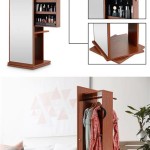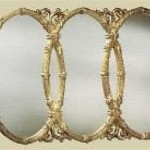How To Glue a Wall Mirror: A Comprehensive Guide
Gluing a wall mirror is a practical and cost-effective method for installation, eliminating the need for screws and other visible hardware. This approach offers a clean, streamlined aesthetic, particularly well-suited for bathrooms, bedrooms, and hallways. However, successful mirror adhesion requires careful planning, proper materials, and meticulous execution. This article provides a detailed guide on how to glue a wall mirror, covering essential preparation steps, adhesive selection, application techniques, and necessary safety precautions.
Key Point 1: Preparing the Wall and Mirror Surface
The foundation of any successful mirror installation lies in thorough preparation of both the wall and the back of the mirror. This step is crucial for ensuring optimal adhesion and preventing future issues like mirror slippage or detachment. Neglecting this phase can lead to costly repairs and potential safety hazards.
Assessing the Wall Surface: The first step involves evaluating the wall's condition. The ideal surface is flat, smooth, and structurally sound. Any imperfections, such as bumps, cracks, or loose paint, must be addressed before proceeding. If the wall is textured, sanding down the surface to create a smoother profile is recommended. Uneven surfaces can lead to stress points on the mirror, increasing the risk of cracking or detachment.
Cleaning the Wall: Once the wall is smooth, it needs to be thoroughly cleaned. Use a mild detergent and water solution to remove any dust, dirt, grease, or other contaminants. Rinse the area with clean water and allow it to dry completely. For particularly stubborn stains or residues, a specialized degreaser might be necessary. Ensure the wall is completely dry before applying any adhesive, as moisture can compromise the bond's integrity.
Priming the Wall (Optional but Recommended): Depending on the wall material, applying a primer can significantly improve adhesive performance. Primers create a better bonding surface, especially on porous materials like drywall or plaster. Choose a primer specifically formulated for use with adhesives and follow the manufacturer's instructions for application and drying time.
Preparing the Mirror Backing: Similar to the wall, the back of the mirror needs thorough cleaning. Use a glass cleaner specifically designed for mirrors to remove any fingerprints, smudges, or manufacturing residues. Avoid using harsh chemicals or abrasive cleaners, as these can damage the mirror's reflective coating. After cleaning, wipe the back of the mirror with a lint-free cloth to ensure a pristine surface. If the mirror has any existing adhesive residue from previous installations, carefully remove it using a plastic scraper and appropriate solvent, being mindful not to scratch the back of the mirror.
Key Point 2: Selecting the Right Adhesive and Application Tools
Choosing the correct adhesive is paramount to a long-lasting and secure mirror installation. Not all adhesives are created equal, and using the wrong type can lead to mirror damage or failure. Similarly, using appropriate application tools ensures precise and even adhesive distribution, contributing to a stronger bond.
Choosing the Appropriate Mirror Adhesive: Selecting a mirror adhesive specifically formulated for this purpose is crucial. These adhesives are designed to be compatible with the reflective backing of mirrors, preventing damage to the silvering layer behind the glass. Look for adhesives labeled as "mirror mastic" or "mirror adhesive." These products typically contain neutral pH compounds that won't react with the mirror's backing. Avoid using construction adhesives or general-purpose glues, as they may contain solvents that can damage the mirror coating over time. Read the product label carefully to ensure it is suitable for the size and weight of the mirror being installed, as well as the type of wall surface.
Understanding Adhesive Properties: Consider the adhesive's open time (the time available to position the mirror after applying the adhesive) and curing time (the time it takes for the adhesive to fully set). A longer open time allows for adjustments and repositioning, while a faster curing time reduces the need for prolonged support. The adhesive's bond strength is also a critical factor, especially for larger or heavier mirrors. Choose an adhesive with sufficient holding power to support the mirror's weight without sagging or detaching.
Selecting Application Tools: The most common method of applying mirror adhesive is with a caulking gun. Ensure the caulking gun is in good working order and compatible with the size of the adhesive cartridge. A notched trowel can also be used for larger mirrors, allowing for a more even distribution of the adhesive across the entire surface. In addition to the application tool, have cleaning cloths, mineral spirits (for cleaning up uncured adhesive), and shims ready for use.
Safety Precautions When Using Adhesives: Always work in a well-ventilated area when using adhesives. Wear gloves and eye protection to prevent skin and eye irritation. Follow the manufacturer's safety recommendations and instructions carefully. If adhesive comes into contact with skin or eyes, wash thoroughly with water and seek medical attention if irritation persists. Dispose of used adhesive cartridges and cleaning materials properly according to local regulations.
Key Point 3: Proper Adhesive Application and Mirror Installation
The success of gluing a wall mirror largely depends on the precise application of the adhesive and careful installation of the mirror onto the prepared wall surface. This stage requires patience, attention to detail, and adherence to best practices.
Applying the Adhesive: Apply the mirror adhesive to the back of the mirror in vertical beads, spaced a few inches apart. Maintain a consistent bead thickness to ensure even distribution of the adhesive. Avoid applying adhesive near the edges of the mirror, as this can cause squeeze-out when the mirror is pressed against the wall. For larger mirrors, consider using a notched trowel to spread the adhesive evenly across the entire surface. This method provides a more uniform bond and reduces the risk of air pockets.
Supporting the Mirror During Curing: Once the adhesive is applied, carefully lift the mirror and position it against the prepared wall surface. Use shims or spacers to maintain a small gap between the bottom edge of the mirror and the wall or countertop. This allows for air circulation and prevents moisture from accumulating behind the mirror. Secure the mirror in place using painter's tape or temporary supports. The type and number of supports required will depend on the size and weight of the mirror. Ensure the supports are strong enough to hold the mirror securely in place during the curing process.
Allowing Adequate Curing Time: Allow the adhesive to cure completely according to the manufacturer's instructions. This typically takes 24 to 72 hours, depending on the adhesive type and environmental conditions. Avoid disturbing the mirror during the curing process. Premature removal of the supports can cause the mirror to shift or detach, compromising the bond. After the curing period, carefully remove the painter's tape or temporary supports.
Final Inspection and Cleanup: Once the supports are removed, inspect the mirror for any signs of slippage or detachment. If any issues are detected, reinforce the bond with additional adhesive or consider using mechanical fasteners, such as mirror clips. Clean any excess adhesive that may have squeezed out around the edges of the mirror. Use a damp cloth and mild detergent to remove any residue. Avoid using harsh chemicals or abrasive cleaners, as they can damage the mirror's finish. Once the mirror is securely in place and the area is clean, the installation is complete.
By following these detailed instructions and taking the necessary precautions, a wall mirror can be successfully glued, resulting in a seamless and visually appealing installation.

How To Glue A Heavy Mirror The Wall Mom Blog Society

How To Remove A Mirror Glued The Wall Forbes Home

How To Use Mirror Adhesive Silicone

How To Safely And Easily Remove A Large Bathroom Builder Mirror From The Wall Site Title

How To Frame A Mirror With Clips Glue The Wall

How To Glue Mirror Wall Easy Adhesion Tips

How To Remove A Wall Mirror 11 Steps With Pictures Wikihow
What Is The Best To Use Glue Mirrors A Wall Quora

How To Hang A Mirror On Wall Without Nails

How To Remove A Wall Mirror 11 Steps With Pictures Wikihow








